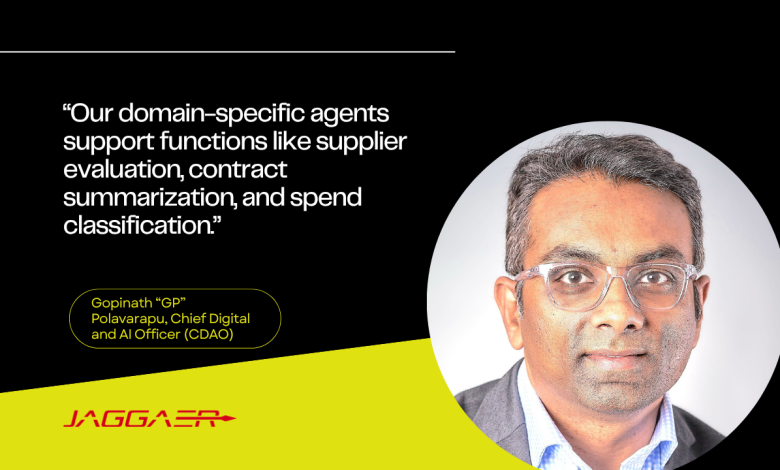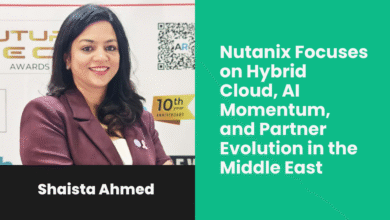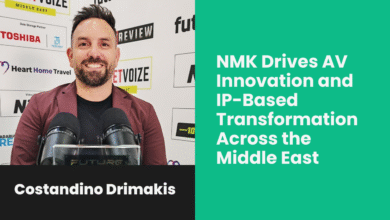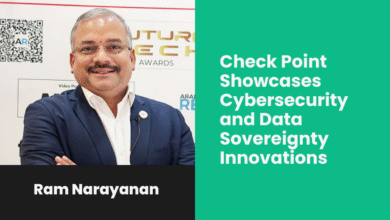Agentic AI is Less About the Model and More About the Orchestration

Gopinath “GP” Polavarapu, Chief Digital and AI Officer (CDAO) at JAGGAER, says while AI agents don’t replace decision-makers, they can significantly reduce effort and increase responsiveness
How do you define Agentic AI, and how does it fundamentally differ from traditional chatbots or rule-based automation?
Agentic AI refers to systems that execute multi-step tasks independently based on goals, rather than scripts or fixed logic. Traditional chatbots are reactive — they answer questions or route workflows based on predefined logic trees. Rule-based automation can streamline repeatable tasks but struggles when inputs change or exceptions arise. Agentic AI, in contrast, interprets real-time data, adjusts to evolving inputs, and performs tasks proactively.
At JAGGAER, we’re integrating Agentic AI into the Source-to-Pay (S2P) lifecycle, blending intelligence with structure. Our domain-specific agents support functions like supplier evaluation, contract summarization, and spend classification — but also enable autonomous actions such as low-risk invoice payments, automatic reorder triggers, and supplier data enrichment. These agents work within deterministic frameworks like approval chains or vendor selection criteria, ensuring governance is preserved. The aim is to improve speed and consistency, not to remove human control.
Beyond task automation, what complex, multi-step problems are agentic AIs uniquely positioned to solve that current AI models cannot?
Agentic AI helps manage layered, cross-functional workflows where inputs evolve and decision points span multiple systems. In procurement, this includes evaluating supplier portfolios in real time, aligning sourcing strategy to cost and risk, and monitoring supply chain signals like commodity prices or geopolitical disruptions.
JAGGAER is exploring how agentic systems can handle these scenarios in a controlled way — for instance, identifying potential vendor risks while simultaneously assessing alternate suppliers, or continuously optimizing procurement timing based on working capital goals. These are dynamic workflows that go beyond automation — they require adaptive logic and feedback loops. While AI agents don’t replace decision-makers, they can significantly reduce effort and increase responsiveness.
How much autonomy should Agentic AI have in decision-making, and where should humans remain in the loop?
We believe autonomy should always be bounded by context and risk. Agentic AI can safely automate repetitive, low-risk activities — like matching invoices to contracts or proposing reorder quantities. But procurement decisions involving vendor selection, legal commitments, or policy exceptions demand human oversight.
At JAGGAER, we’re embedding human-in-the-loop mechanisms across all agent interactions. Our AI doesn’t make final calls on sourcing awards or supplier onboarding; instead, it provides evidence-based recommendations with clear traceability. The design philosophy is to support informed human judgment, not override it.
What infrastructure challenges (such as power, cooling, latency) arise when deploying Agentic AI at scale?
The technical challenges of Agentic AI scale beyond just infrastructure horsepower. Latency, orchestration, and governance are major factors. Agentic systems often run multiple concurrent agents across departments — each accessing real-time data, external APIs, and internal systems. This creates complexity around context persistence, traceability, and scalability.
We’re addressing these challenges by adopting modular, API-first architectures that support secure, scalable deployment across hybrid environments. Additionally, deterministic layers — such as approval flows, policy logic, and audit checkpoints — must remain intact. We’re designing our platform to ensure agents operate within these parameters, while offering flexibility to innovate.
What’s the next frontier for Agentic AI—will we see AI “agents” collaborating like human teams?
We’re beginning to see early signs of cross-agent collaboration — where different agents specialize in tasks like supplier scoring, compliance validation, and ESG monitoring, then exchange information to inform each other’s actions. This modularity reflects how real procurement teams work and is where we see meaningful value emerging.
At JAGGAER, we’re piloting scenarios where agents coordinate across the Source-to-Contract and Procure-to-Pay spectrum — flagging contract discrepancies, updating risk profiles, and even guiding stakeholder approvals. These aren’t fully autonomous systems; they’re distributed AI collaborators designed to extend team capacity while maintaining oversight.
Will open-source models keep pace with proprietary Agentic AI systems, or will there be a widening gap?
Open-source models are evolving rapidly and will continue to be vital components in enterprise AI stacks. However, Agentic AI is less about the model and more about the orchestration, business logic, and reliability. Procurement workflows require explainability, governance, and seamless integration with ERP, finance, and supplier data ecosystems.
At JAGGAER, we adopt a hybrid strategy — leveraging open-source frameworks where appropriate, while building proprietary orchestration layers tuned to procurement-specific requirements. Rather than competing on raw model performance, we differentiate by delivering domain-relevant outcomes that are reliable, auditable, and ready for enterprise use.





